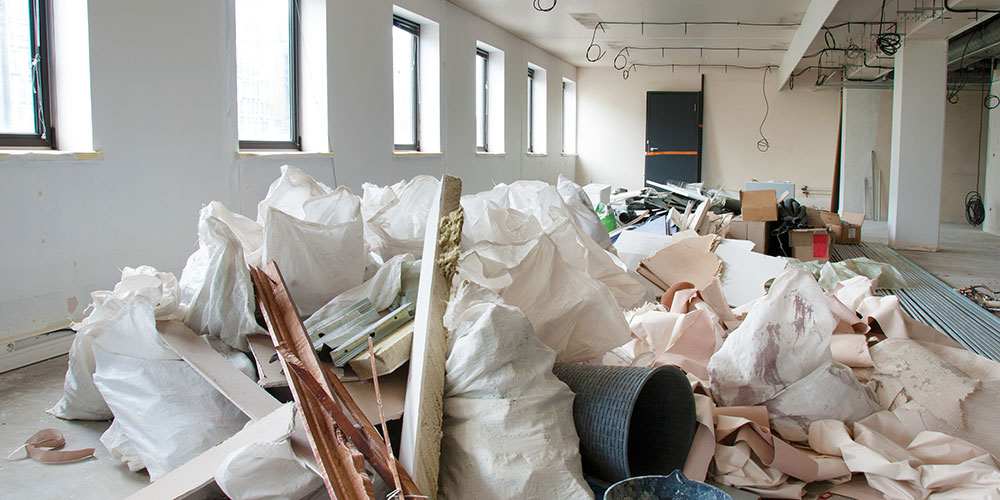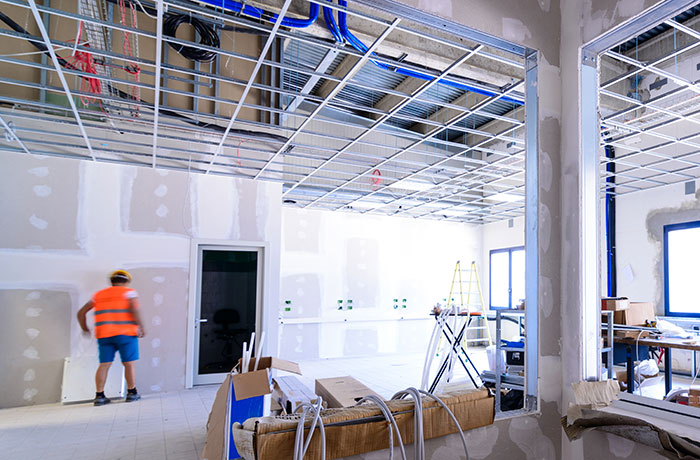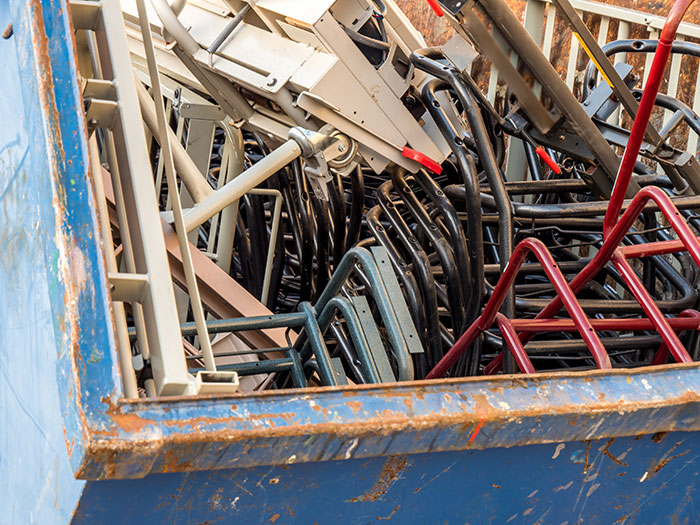
As a business owner, your goal is for your operations to prosper. You look for innovative ways to get to the right path that will help you achieve your mission. Surely, you have several methods and techniques in mind, including hiring the best people and taking advantage of new technologies. However, there is one thing that you should not forget, and it has something to do with your workspace.
Renovating your office, company building, or retail shop can bring positive effects to your business. Believe it or not, an aesthetically-pleasing environment can enhance your staff’s productivity.
Commercial refits can either be large or small. The total expanse of the project can depend on several factors, including your budget. However, it is not a requirement to shell out tons of money. The renovation can be as simple as adding new fixtures or even using a fresh lick of paint. These changes, whether dramatic or modest, can generate a considerable effect when done right.
What Commercial Renovations Entail
If your business is thriving, you may think about expanding. Before we proceed, let us differentiate renovations from other building projects: restoration and remodel. When you restore a building, your goal is to bring it back to its original condition. Most of the time, historic buildings are the main focus of restoration projects.
Meanwhile, remodelling refers to changing the whole room or building itself. It tends to be more involved and taxing because it can also include changing the structure.
As for renovation, it refers to the process of refurbishing a particular structure. It fixes what you already have in the building and can include adding new components. In a way, it is a form of enhancing what you currently own, so it becomes more effective.
Commercial renovations offer plenty of benefits, including:
- Employees, organisation members, and the whole company will be prouder of their building.
- The sense of pride can increase the energy and efficiency of the workers.
- Renovations typically take place to improve the existing design of the store or shop.
- The improvement can attract new employees and customers.
- Refurbishments also help increase the value of the property.
In different states and territories in Australia, buildings need to comply with rules and obtain specific licences and permits, such as:
- Building licences
- Gas fitting
- Electrical licences
- Plumbing
- Development applications
- Heavy vehicles
- Zoning approvals
- Line marking (we recommend Linemarking and Signs WA)
- And so on
Any construction and refurbishment projects are required to have a waste disposal plan. In Australia, renovations have three phases: plan, improve, and organise. This type of construction project is undeniably messy and produces a tremendous amount of waste.
A survey revealed that many construction companies and businesses regard waste management as simply compliance paperwork. The respondents believed that such an initiative has no real effect on the project outcome. In reality, waste can have a significant consequence on the business, environment, and the whole country.
How to Manage Waste and Clutter during Commercial Refits
All around the world, building materials make up for about half of all the items we utilise daily. At the same time, they account for about half of the solid junk produced.
Construction from the very beginning, including raw material extraction, processing, transportation, and manufacturing, can have a significant impact on the environment. According to the Organisation for Economic Cooperation and Development, buildings generate up to 30% of raw materials, 25% of solid waste, and 42% of energy consumption. The rest goes to water, land, and emissions to the atmosphere.
The data from the 2010 National Waste Report showed that about 52% (equivalent to 22,707,000 tonnes) of waste in the country was recycled. Of this percentage, 42% came from construction and demolition.
It is clear that construction projects, including commercial refits, create an incredible amount of waste. The Australian Bureau of Statistics confirmed that more than $7 billion worth of renovations were carried out in the country from 2014 to 2015. It is easy to tell that million to billion tonnes of waste was generated. As a business owner, you need to come up with a plan that will minimise and manage the waste generated during the renovation process.
This is where skip bins enter the picture. They are the safest option when it comes to dealing with rubbish removal during a renovation. This specific task – let’s admit it – is extremely filthy and irritating. No one enjoys handling waste problems, especially after an arduous task, such as commercial renovation.
Skip bins are where you place or store rubbish. They are an efficient way to reduce or even eliminate clutter significantly. Additionally, they also lower the risk of trips and falls, which are real hazards in the workplace.
Understanding Skip Bins
One thing you have to know about skip bins is that you can only place a href=”https://www.backyardbins.com.au/what-can-i-put-in-a-skip-bin/”>certain items in them. Let us go over the types of waste that you generate during a renovation:
- FixturesRefurbishments often include replacing old items with new ones. You may have an old mirror or even a fridge that you wish to get rid of. Fortunately, you can place these things in the skip bin. You can also put furniture pieces, such as desks, tables, and filing cabinets. Skips also allow lamps, as long as there are no light bulbs.They say that one person’s waste is another’s treasure. Some organisations accept your old fixtures so that they can donate them to other people.
- Building RubbleThe most apparent type of waste you will produce is building rubble. If your renovation involves breaking down partitions or walls, your primary goal may be to create more room in the building. While you have a brand new place that you will surely be proud of, the waste produced can be off-putting.Renovating the property can lead to piles of rubble, including pieces of ceramic floor, concrete, bricks, pavers, and perhaps even roof tiles.General waste skips do not allow concrete and bricks, however. For commercial renovations, you will hire a mixed waste skip bin where you can dispose of the mentioned materials.
- Green WasteImprovements can also take place in a yard or lawn, which can produce green waste. If you have grass cuttings, leaves, clippings, weeds, soil, sand, and plants, you can place them in your mixed waste skip. Tree stumps, although they are considered green waste, can never be inside the bin.
- Paint, Packaging, and Other Excess MaterialsMost projects include repainting jobs. You probably have a few cans of dried paint after the renovation. You can place the cans inside the skip bin that you have hired. However, there is an additional step that you should know about.Skip bins should not contain any excess paint. You should dump them onto a newspaper first before disposing of them. Wait for the paint to dry as well before you place the papers into the skip bins. If you are just eliminating cans, make sure that they are closed and taped. Remember that you should never put liquid paint into the container.
- Heavy WasteRefurbishment can include bulky and heavy waste. For instance, timber and steel are among the most commonly used materials for new structures, as well as renovation projects. If you have excess steel or wood, you do not have to worry about disposing of them. The skip bin that you have hired accepts this type of bulky waste.Meanwhile, if you have treated timber, which includes decking and floorboards, you can place them in the skip bin as well.
Skip Bin Size: Which Should You Pick?
Before you perform the renovation of your retail store or building, you should know the size of the skip bin to hire. It should be enough for the whole duration of your renovation project.
Your choices include:
- 2m3 to 3m3 – These bins are typically for home renovations. However, if you only have to refurbish one small space in your store, you can choose this option. Although the skips are quite small, they still offer enough storage for the waste produced.
- 4m3 to 6m3 – If you need to renovate a small commercial site or a shop with two or more partitions, you may opt for this bin size.
- 8m3 to 10m3 – These bins are the best for commercial refits. They allow industrial waste, so you can place heavy items in them, especially if you are working on multiple floors of your store.
When you know the amount of waste you will produce, you can quickly decide on the size of the bin you need for your upcoming renovation project. This step also helps you save money and time, as well as working space.
Cost Concerns
While we are on the subject of money, you may think that hiring a skip bin is an unnecessary expense. However, if you think about the convenience it offers, you know you can save more out of it. Costs differ from one supplier to another. Some charge daily, while others have a flat rate. Only Backyard Bins can give you a flexible hire period without adding extra rental charges if you keep the bin longer than seven days.
Contact Backyard Bins today to learn more about our unbeatable offer
Backyard Bins Team
“ [rcblock id="2165"]”

